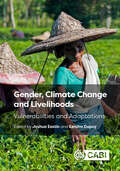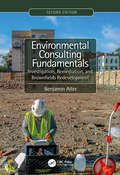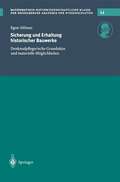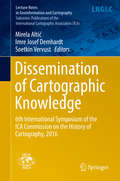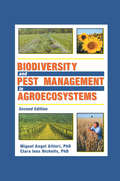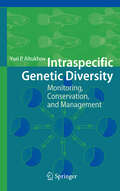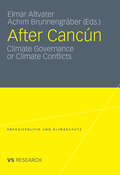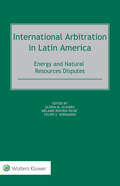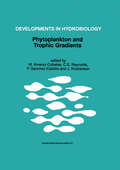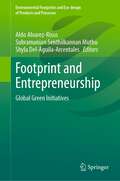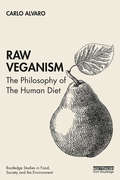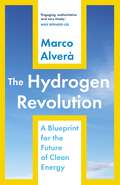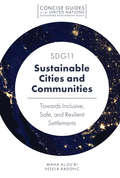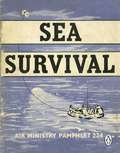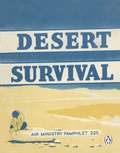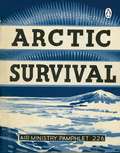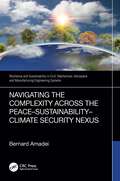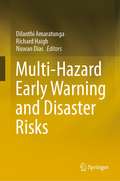- Table View
- List View
Industrial Hygiene: Improving Worker Health through an Operational Risk Approach (Sustainable Improvements in Environment Safety and Health)
by Frances Alston Emily J. Millikin Willie PiispanenOver the past forty years, the Industrial Hygiene profession has significantly grown, and is expected to continue to grow as workplaces evolve in the development, management, and usage of hazardous materials. This growth in the profession is also related to the shift in public knowledge and perception regarding the acceptance of the health risk from activities performed at work and home. As time progresses, workplaces are being regulated to not only minimize the health imparts to the workforce, but also decrease the likelihood of negatively impacting the environment. Society has become more educated on the potential impacts on human health and the environment that hazardous materials, activities, and environments can pose. As such, there has been a noticeable decrease in the acceptance of risk by workers and the public. The accepted standard of performance for Industrial Hygiene has grown beyond compliance, but now also focuses on improving existing processes and practices to create a workplace free from work related injury and illness. Features: Shows application of risk mitigating techniques for industrial hygienists Explains the definition of risk and how it applies to health and safety management Defines the need for quality data management and continuous improvement in assessments Describes the role of the Industrial Hygienist and risk management when responding to emergencies Industrial Hygiene: Improving Worker Health through an Operational Risk Approach focuses on the implementation of Industrial Hygiene, using a risk-based approach, in an operational environment. The approaches and methods described in this book are designed to assist the Industrial Hygienist in managing workplace risks, including risks associated with anticipation, recognition, evaluation, and hazard control processes.
Gender, Climate Change and Livelihoods: Vulnerabilities and Adaptations
by Margaret Alston Salim Momtaz Elizabeth Bryan Muhammad Asaduzzaman Nahid Rezwana Aden Aw-Hassan Elisabeth Garner Patricia E. Perkins Agnes Babugura Bipasha Baruah Abderrahim Bentaibi Quinn Bernier Yvonne Braun Boubaker Dhehibi Diana Hummel Zobaidul Kabir Edward Kato Francis Mwesigye Dina Najjar Balikisu Osman Elizabeth Opiyo Onyango Shahreen ShehwarThis book applies a gendered lens to evaluate the dynamic linkages between climate change and livelihoods in developing countries. It examines how climate change affects women and men in distinct ways, and what the implications are for earning income and accessing the natural, social, economic, and political resources required to survive and thrive. The book's contributing authors analyze the gendered impact of climate change on different types of livelihoods, in distinct contexts, including urban and rural, and in diverse geographic locations, including Asia, Africa and the Caribbean. It focuses on understanding how public policies and power dynamics shape gendered vulnerabilities and impacts, how gender influences coping and adaptation mechanisms, and how civil society organizations incorporate gender into their climate advocacy strategies. This book: -Provides cutting-edge scholarship on an underrepresented area of climate change: the gendered impacts of climate change on livelihoods. -Covers a range of different types of livelihoods and geographic locations. -Involves contributors from a diverse array of cultural and scholarly backgrounds, bringing contrasting perspectives to the topic. This book is recommended for scholars, students, and practitioners who study or work in fields such as climate change, gender, livelihoods, public policy, economic development, and agriculture.
Environmental Consulting Fundamentals: Investigation, Remediation, and Brownfields Redevelopment, Second Edition
by Benjamin AlterThis book is a primer for those interested in a career in this dynamic, multidisciplinary field as well as a handy reference for practicing consultants. Combining theory and practice advice into a concise, readable format, the book is an accessible introduction to the types of projects you will encounter as an environmental consultant and lays the groundwork for what you’ll need to know in this challenging and rewarding profession. Also available with this book, under the Additional Resourcs tab, are PowerPoint lectures that correspond with each chapter. New in the Second Edition Covers the latest environmental issues, including emerging contaminants, and the latest technological advances in environmental investigation and remediation New chapters dedicated to vapor intrusion investigation and mitigation and to Brownfields redevelopment and project financing. An expanded chapter describing the staffing, budgeting, and execution of environmental projects. Descriptions of the remediation processes under RCRA and Superfund Descriptions on how each chapter’s subject matter applies to the job of the environmental consultant. Dozens of new figures, photographs, and tables designed to enhance the reader’s understanding of the subject matter. Problems and questions to be used for homework assignments or classroom discussions.
Environmental Consulting Fundamentals: Investigation, Remediation, and Brownfields Redevelopment, Second Edition
by Benjamin AlterThis book is a primer for those interested in a career in this dynamic, multidisciplinary field as well as a handy reference for practicing consultants. Combining theory and practice advice into a concise, readable format, the book is an accessible introduction to the types of projects you will encounter as an environmental consultant and lays the groundwork for what you’ll need to know in this challenging and rewarding profession. Also available with this book, under the Additional Resources tab, are PowerPoint lectures that correspond with each chapter. New in the Second Edition Covers the latest environmental issues, including emerging contaminants, and the latest technological advances in environmental investigation and remediation New chapters dedicated to vapor intrusion investigation and mitigation and to Brownfields redevelopment and project financing. An expanded chapter describing the staffing, budgeting, and execution of environmental projects. Descriptions of the remediation processes under RCRA and Superfund Descriptions on how each chapter’s subject matter applies to the job of the environmental consultant. Dozens of new figures, photographs, and tables designed to enhance the reader’s understanding of the subject matter. Problems and questions to be used for homework assignments or classroom discussions.
Haftung und Entschädigung nach Tankerunfällen auf See: Bestandsaufnahme, Rechtsvergleich und Überlegungen de lege ferenda (Hamburg Studies on Maritime Affairs #6)
by Rainer AltfuldischKritischer Beitrag zur aktuellen Diskussion um die Änderung des internationalen Haftungs- und Entschädigungssystems bei Tankerunfällen auf See. Das seit 1969 bestehende und 1992 nur gering überarbeitete System geriet nach den Unfällen der "Erika" (1999) und "Prestige" (2002) zunehmend in die Kritik. Der Autor analysiert das internationale Haftungs- und Entschädigungssystem, die aktuelle Rechtsprechung und setzt sich hiermit auseinander.
Sicherung und Erhaltung historischer Bauwerke: Denkmalpflegerische Grundsätze und materielle Möglichkeiten (Schriften der Mathematisch-naturwissenschaftlichen Klasse #11)
by E. AlthausModerne Reparaturmaterialien und historische Baustoffe sind nicht a priori miteinander kompatibel. Durch mineralogische Untersuchungen muß geklärt werden, welche Materialien verwendet werden können,um die gewünschten denkmalpflegerischen Wirkungen zu erzielen. Dazu müssen Grundsätze beachtet werden, welche in einem historisch orientierten Überblick dargelegt werden.
Dissemination of Cartographic Knowledge: 6th International Symposium of the ICA Commission on the History of Cartography, 2016 (Lecture Notes in Geoinformation and Cartography)
by Mirela Altić Imre Josef Demhardt Soetkin VervustThis book gathers 22 papers which were presented at the 6th International Symposium of the ICA Commission on the History of Cartography in Dubrovnik, Croatia on 13–15 October 2016. The overall conference theme was ‘The Dissemination of Cartographic Knowledge: Production – Trade – Consumption – Preservation’. The book presents original research by internationally respected authors in the field of historical cartography, offering a significant contribution to the development of this field of study, but also of geography, history and the GIS sciences. The primary target audience includes researchers, educators, postgraduate students, map librarians and archivists.
Biodiversity and Pest Management in Agroecosystems
by Miguel Altieri Clara NichollsExplore the latest research on biological control! Completely updated for 2004, this new edition examines methods for making agricultural systems less susceptible to insect pests. Containing new findings and reports of strategies, Biodiversity and Pest Management in Agroecosystems, Second Edition will show you how pests can be managed by enhancing beneficial biodiversity using agroecological diversification methods. Biodiversity and Pest Management in Agroecosystems, Second Edition provides you with an essential overview of the role of biodiversity in agriculture and then gets specific, with new and updated information on: the agroecology of pest management plant diversity and pest outbreaks within agroecosystems diversification strategies for pest management how sustainable farming systems are designed You'll also explore: the role of plant diversity on the biology of beneficial insects insect regulation in diverse agroecosystems manipulation of plant diversity in agroecosystems ecological and socioeconomic implications The fact is, many modern agroecosystems are unstable as a consequence of constant human intervention in crop systems which ignore ecological principles. With case studies on a variety of crops and pests, Biodiversity and Pest Management in Agroecosystems, Second Edition explores entomological aspects of agriculture and analyzes the ecological basis for the maintenance of biodiversity. It will familiarize you with the theory and practice of enhancing biological pest control in agricultural systems by managing vegetational diversity via multiple cropping, cover cropping, rotations, and other spatial and temporal designs. With studies on intercropping, cover cropping, weed management, and crop-field border vegetation manipulation, this book covers the effects of these diverse systems on pest population density and the mechanisms underlying pest reduction in polycultures. Make it a part of your reference/teaching collection today!
Biodiversity and Pest Management in Agroecosystems
by Miguel Altieri Clara NichollsExplore the latest research on biological control! Completely updated for 2004, this new edition examines methods for making agricultural systems less susceptible to insect pests. Containing new findings and reports of strategies, Biodiversity and Pest Management in Agroecosystems, Second Edition will show you how pests can be managed by enhancing beneficial biodiversity using agroecological diversification methods. Biodiversity and Pest Management in Agroecosystems, Second Edition provides you with an essential overview of the role of biodiversity in agriculture and then gets specific, with new and updated information on: the agroecology of pest management plant diversity and pest outbreaks within agroecosystems diversification strategies for pest management how sustainable farming systems are designed You'll also explore: the role of plant diversity on the biology of beneficial insects insect regulation in diverse agroecosystems manipulation of plant diversity in agroecosystems ecological and socioeconomic implications The fact is, many modern agroecosystems are unstable as a consequence of constant human intervention in crop systems which ignore ecological principles. With case studies on a variety of crops and pests, Biodiversity and Pest Management in Agroecosystems, Second Edition explores entomological aspects of agriculture and analyzes the ecological basis for the maintenance of biodiversity. It will familiarize you with the theory and practice of enhancing biological pest control in agricultural systems by managing vegetational diversity via multiple cropping, cover cropping, rotations, and other spatial and temporal designs. With studies on intercropping, cover cropping, weed management, and crop-field border vegetation manipulation, this book covers the effects of these diverse systems on pest population density and the mechanisms underlying pest reduction in polycultures. Make it a part of your reference/teaching collection today!
Intraspecific Genetic Diversity: Monitoring, Conservation, and Management
by Yuri Petrovich AltukhovPopulation and evolutionary genetics have been quickly developing ?elds of biological research over the past decades. This book compiles our current understanding of genetic processes in natural populations. In addition, the book provides the author’s original ideas and concepts based on the data obtained by himself and his close coworkers. The author introduces his pioneering concept of population genetic stability,and much of thebook is concerned with the factors and conditions of such stability. Why does genetic stability matter so much? Altukhov argues that the sustainable use of natural resources, including genetic resources of popu- tions, critically depends on the maintenance of their stability. The preser- tion of well-adapted genetic characteristics from one generation to the next is essential for this stability. Traditionally, population genetics has been - cusedonevolution andthe role of evolutionary factorsinshapinggenetic structures of populations. While the idea of a population as a dynamic unit of evolution has been widely accepted, the signi?cance of genetic stability and its implications for the long-term survival of populations and species have not been fully appreciated.
After Cancún: Climate Governance or Climate Conflicts (Energiepolitik und Klimaschutz. Energy Policy and Climate Protection)
by Elmar Altvater Achim BrunnengräberThe world is facing several serious challenges at the close of the fossil and nuclear energy regime: the limited resources of cheap conventional oil can only be surmounted by tapping unconventional oil reserves, e.g. deep sea oil. The explosion of the oil platform Deepwater Horizon in 2010 and the subsequent oil spill caused enormous damage, which even a year later cannot be fully estimated. Another even more important threat emanating from the fossil and nuclear energy regime has been brought to our attention by the Fukushima disaster. Last but not least, the problem of climate change caused by an increase in greenhouse gas emissions is looming, despite the fact that the international community has agreed on a considerable reduction of these emissions. Is this poor result of the Kyoto Protocol and the failure of successive climate conferences the consequence of a preference for the use of market-based instruments? The majority of climate scientists, economists, and politicians believe in the efficiency of “cap-and-trade” regulations. They even conceive them as a constituent ingredient of a “Green New Deal” or “Global Green Recovery”. The contributions in this volume provide a critical examination of the theoretical foundations, the political implications, and the empirical experiences of the application of market mechanisms and financial instruments to climate policy.
International Arbitration in Latin America: Energy and Natural Resources Disputes
by Gloria M. Alvarez Mélanie Riofrio Piché Felipe V. SperandioEnergy projects in Latin America are a major contributor to economic growth worldwide. This book is the first to offer a comprehensive, in-depth analysis of specific issues arising from energy and natural resources contracts and disputes in the region, covering a wide range of procedural, substantive, and socio-legal issues. The book also includes how states have shifted from passive business partners to more active controlling players. The book contains an extensive treatment and examination of the particularities of arbitration practice in Latin America, including arbitrability, public order, enforcement, and the complex public-private nature of energy transactions. Specialists experienced in resolving international energy and natural disputes throughout the region provide detailed analysis of such issues and topics, including: state-owned entities as co-investors or contracting parties; role of environmental law, indigenous rights and public participation; issues related to political changes, corruption, and quantification of damages; climate change, renewable energy, and the energy transition; force majeure, hardship, and price reopeners; arbitration in the electricity sector; take-or-pay contracts; recognition and enforcement of awards; tension between stabilization clauses and human rights; mediation as a method for dispute settlement in the energy and natural resources sector; and different comparative approaches taken by national courts in key Latin American jurisdictions. The book also delivers a clear explanation on the impact made to the arbitration process by Covid-19, emerging laws, changes of political circumstances, the economic global trends in the oil & gas market, the energy transition, and the rise of new technologies. This invaluable book will be welcomed by in-house lawyers, government officials, as well as academics and rest of the arbitration community involved in international arbitration with particular interest in the energy and natural resources sector.
Phytoplankton and Trophic Gradients: Proceedings of the 10th Workshop of the International Association of Phytoplankton Taxonomy & Ecology (IAP), held in Granada, Spain, 21–29 June 1996 (Developments in Hydrobiology #129)
by M. Alvarez-Cobelas Colin S. Reynolds P. Sanchez-Castillo Jørgen KristiansenThese proceedings deal with the relationship between species composition of freshwater phytoplankton and the trophic gradient. Particular regard is paid to the composite question, what lives where and why? Overview papers report the state of the art and suggest that the trophic spectrum appears to be a probabilistic outcome of several dimensions of variability that impinge upon phytoplankton species selection. Studies on community structure span all latitudes from those of Antarctica to equatorial Brazil, and also include reports on light and nutrient gradients, pH and fish-stock effects on species composition. Seasonal and longterm phytoplankton dynamics in lakes of varying trophic status are also considered. Finally, studies on the taxonomy and autoecology of some groups (e.g. Volvocales, Chrysophytes and Euglenophytes) living at the extremes of the trophic spectrum contribute to our knowledge of this usually neglected phytoplankton. This is the first time that a book covers such a topic, and it will prove an excellent source of information to anyone working on phytoplankton ecology and ecological indicators. Limnologists in general, algologists and the technical staff at water authorities will all benefit by reading this book.
Footprint and Entrepreneurship: Global Green Initiatives (Environmental Footprints And Eco-design Of Products And Processes Ser.)
by Aldo Alvarez-Risco Subramanian Senthilkannan Muthu Shyla Del-Aguila-ArcentalesRaw Veganism: The Philosophy of The Human Diet (Routledge Studies in Food, Society and the Environment)
by Carlo AlvaroHuman beings are getting fatter and sicker. As we question what we eat and why we eat it, this book argues that living well involves consuming a raw vegan diet. With eating healthfully and eating ethically being simpler said than done, this book argues that the best solution to health, environmental, and ethical problems concerning animals is raw veganism—the human diet. The human diet is what humans are naturally designed to eat, and that is, a raw vegan diet of fruit, tender leafy greens, and occasionally nuts and seeds. While veganism raises challenging questions over the ethics of consuming animal products, while also considering the environmental impact of the agriculture industry, raw veganism goes a step further and argues that consuming cooked food is also detrimental to our health and the environment. Cooking foods allows us to eat food that is not otherwise fit for human consumption and in an age that promotes eating foods in ‘moderation’ and having ‘balanced’ diets, this raises the question of why we are eating foods that should only be consumed in moderation at all, as moderation clearly implies they aren’t good for us. In addition, from an environmental perspective, the use of stoves, ovens and microwaves for cooking contributes significantly to energy consumption and cooking in general generates excessive waste of food and resources. Thus, this book maintains that living well and living a noble life, that is, good physical and moral health, requires consuming a raw vegan diet. Exploring the scientific and philosophical aspects of raw veganism, this novel book is essential reading for all interested in promoting ethical, healthful, and sustainable diets.
Raw Veganism: The Philosophy of The Human Diet (Routledge Studies in Food, Society and the Environment)
by Carlo AlvaroHuman beings are getting fatter and sicker. As we question what we eat and why we eat it, this book argues that living well involves consuming a raw vegan diet. With eating healthfully and eating ethically being simpler said than done, this book argues that the best solution to health, environmental, and ethical problems concerning animals is raw veganism—the human diet. The human diet is what humans are naturally designed to eat, and that is, a raw vegan diet of fruit, tender leafy greens, and occasionally nuts and seeds. While veganism raises challenging questions over the ethics of consuming animal products, while also considering the environmental impact of the agriculture industry, raw veganism goes a step further and argues that consuming cooked food is also detrimental to our health and the environment. Cooking foods allows us to eat food that is not otherwise fit for human consumption and in an age that promotes eating foods in ‘moderation’ and having ‘balanced’ diets, this raises the question of why we are eating foods that should only be consumed in moderation at all, as moderation clearly implies they aren’t good for us. In addition, from an environmental perspective, the use of stoves, ovens and microwaves for cooking contributes significantly to energy consumption and cooking in general generates excessive waste of food and resources. Thus, this book maintains that living well and living a noble life, that is, good physical and moral health, requires consuming a raw vegan diet. Exploring the scientific and philosophical aspects of raw veganism, this novel book is essential reading for all interested in promoting ethical, healthful, and sustainable diets.
The Hydrogen Revolution: a blueprint for the future of clean energy
by Marco Alverà'Engaging, authoritative and very timely. Marco Alverà spells Hydrogen's critical role as an energy store in the clean power transition' - Mike Berners-Lee, author of THERE IS NO PLANET BPicture this: It's 2050. The looming shadow of climate change is finally receding. The planet's temperature is stabilising. Rainforests and coral reefs beginning to thrive once more. We are returning to equilibrium with nature. This isn't wishful thinking; it can be our reality. We just need to embrace hydrogen: the missing link.The beauty of hydrogen is its simplicity. It's simple to make, and simple to use. You are essentially bottling sunlight from renewable energy sources in the form of hydrogen, and using it to bring clean energy to every corner of the globe. The best part about hydrogen is that when you use it, the only by-product is water.As energy expert Marco Alverà explains, if we're going to heal the climate, we need to start thinking big. This book is the blueprint for how to get us there. Whether you are a policy maker, a business person, an activist, or simply curious, the message is this: there is hope, for us and our planet. Hydrogen can help save the world.
SDG11 - Sustainable Cities and Communities: Towards Inclusive, Safe, and Resilient Settlements (Concise Guides to the United Nations Sustainable Development Goals)
by Maha Al-Zu'Bi Vesela RadovicSustainable Development Goal 11, one of 17 Global Goals that make up the 2030 Agenda for Sustainable Development, recognizes the need to make cities and human settlements ‘inclusive, safe, resilient and sustainable.’ This book uses empirical analysis to address challenges associated with the implementation of SDG11. It considers policies, strategies and success stories from various regions, countries and cities, including actions to improve natural resources management, reduce GHG emissions, and develop urban adaptation and resilience strategies and disaster risk management to help decision-makers, planners and practitioners in achieving the 2030 agenda. Concise Guides to the United Nations Sustainable Development Goals comprises 17 short books, each examining one of the UN Sustainable Development Goals. The series provides an integrated assessment of the SDGs from economic, legal, social, environmental and cultural perspectives.
SDG11 - Sustainable Cities and Communities: Towards Inclusive, Safe, and Resilient Settlements (Concise Guides to the United Nations Sustainable Development Goals)
by Maha Al-Zu'Bi Vesela RadovicSustainable Development Goal 11, one of 17 Global Goals that make up the 2030 Agenda for Sustainable Development, recognizes the need to make cities and human settlements ‘inclusive, safe, resilient and sustainable.’ This book uses empirical analysis to address challenges associated with the implementation of SDG11. It considers policies, strategies and success stories from various regions, countries and cities, including actions to improve natural resources management, reduce GHG emissions, and develop urban adaptation and resilience strategies and disaster risk management to help decision-makers, planners and practitioners in achieving the 2030 agenda. Concise Guides to the United Nations Sustainable Development Goals comprises 17 short books, each examining one of the UN Sustainable Development Goals. The series provides an integrated assessment of the SDGs from economic, legal, social, environmental and cultural perspectives.
Sea Survival (Air Ministry Survival Guide)
by A.M. Pamphlet 224THE ULTIMATE SURVIVAL GUIDE for anyone who thinks they'd survive the world's most hostile environments - or at least imagine they could do.-----------------------------First issued to airmen in the 1950s, the Air Ministry's Sea Survival guide includes original and authentic emergency advice to crew operating over the ocean. With original illustrations and text, these survival guides provide an insight to military survival techniques from a by-gone era. Packed with original line drawings and instruction in: - How to punch man-eating sharks. Which are 'cowards' - The pros and cons of drinking 'fish juice' - When to smoke Focussing on one of the most challenging environments on Earth, Sea Survival is one of four reprints of The Air Ministry's emergency survival pamphlets. Others include: Jungle Survival Desert Survival Arctic Survival
Desert Survival (Air Ministry Survival Guide)
by A.M. Pamphlet 225THE ULTIMATE SURVIVAL GUIDE for anyone who thinks they'd survive the world's most hostile environments - or at least imagine they could do.-----------------------------First issued to airmen in the 1950s, the Air Ministry's Sea Survival guide includes original and authentic emergency advice to crew operating over the ocean. With original illustrations and text, these survival guides provide an insight to military survival techniques from a by-gone era.Packed with original line drawings and instruction in:- How to find water in a dry stream course- How to make a hat out of seat cushions- What to do in the event of meeting 'hostile parties'Focussing on one of the most unforgiving environments on Earth, Desert Survival is one of four reprints of The Air Ministry's emergency survival pamphlets. Others include:· Jungle Survival· Sea Survival· Arctic Survival
Arctic Survival (Air Ministry Survival Guide)
by A.M. Pamphlet 226THE ULTIMATE SURVIVAL GUIDE for anyone who thinks they'd survive the world's most hostile environments - or at least imagine they could do.-----------------------------First issued to airmen in the 1950s, the Air Ministry's Sea Survival guide includes original and authentic emergency advice to crew operating over the ocean. With original illustrations and text, these survival guides provide an insight to military survival techniques from a by-gone era. Packed with original line drawings and instruction in:- The best faces to pull to prevent frostbite and when you can expect bits of you to 'fall off', should you fail- How to build a structurally sound igloo- How to fashion a mask to prevent snowblindnessFocussing on the harshest of situations one can find oneself in, Arctic Survival is one of four reprints of The Air Ministry's emergency survival pamphlets. Others include:Jungle SurvivalDesert SurvivalArctic Survival
Navigating the Complexity Across the Peace–Sustainability–Climate Security Nexus (Resilience and Sustainability in Civil, Mechanical, Aerospace and Manufacturing Engineering Systems)
by Bernard AmadeiPromoting peace and sustainability in human development while accounting for the risks associated with the impact of climate change on society has become more imperative than ever when addressing humanity's challenges of the twenty-first century. There is enough evidence that peace, sustainability, and climate security are entangled with multiple complex interactions and cannot be dealt with in isolation and independently from the environment and the numerous systems with which they interact. Yet, the intersection of peace, sustainability, and climate security or their opposites (i.e., conflict, unsustainability, and climate vulnerability) is rarely articulated with a systemic mindset. A multi-solving nexus approach is more appropriate to capture the complexity and uncertainty of how the three sectors of peace, sustainability, and climate security play a role in community development, the nature of their causal chains, and the feedback on how community development affects the three sectors. Navigating the Complexity Across the Peace–Sustainability–Climate Security Nexus explores the value proposition of using a systems approach, methodology, and tools to comprehend and model that dynamic. Features of the book: Explores the interaction between the different components of peace and the relationship between peace, sustainability, and climate security using semi-qualitative and quantitative tools; Explains how climate adaptation and mitigation are related to peace or conflict; Presents generic system dynamics modeling that can be used in different contexts.
Navigating the Complexity Across the Peace–Sustainability–Climate Security Nexus (Resilience and Sustainability in Civil, Mechanical, Aerospace and Manufacturing Engineering Systems)
by Bernard AmadeiPromoting peace and sustainability in human development while accounting for the risks associated with the impact of climate change on society has become more imperative than ever when addressing humanity's challenges of the twenty-first century. There is enough evidence that peace, sustainability, and climate security are entangled with multiple complex interactions and cannot be dealt with in isolation and independently from the environment and the numerous systems with which they interact. Yet, the intersection of peace, sustainability, and climate security or their opposites (i.e., conflict, unsustainability, and climate vulnerability) is rarely articulated with a systemic mindset. A multi-solving nexus approach is more appropriate to capture the complexity and uncertainty of how the three sectors of peace, sustainability, and climate security play a role in community development, the nature of their causal chains, and the feedback on how community development affects the three sectors. Navigating the Complexity Across the Peace–Sustainability–Climate Security Nexus explores the value proposition of using a systems approach, methodology, and tools to comprehend and model that dynamic. Features of the book: Explores the interaction between the different components of peace and the relationship between peace, sustainability, and climate security using semi-qualitative and quantitative tools; Explains how climate adaptation and mitigation are related to peace or conflict; Presents generic system dynamics modeling that can be used in different contexts.
Multi-Hazard Early Warning and Disaster Risks
by Dilanthi Amaratunga Richard Haigh Nuwan DiasThis book presents a collection of papers under the theme of multi-hazard early warning and disaster risks. These were selected from the presentations made at the International Symposium on Tsunami and Multi-Hazard Risks, Early Warning and Community Awareness in supporting implementation of the Sendai Framework for Disaster Risk Reduction 2015-2030. This conference aimed to recognize achievements and to highlight work that still needs to be carried out. The conference promoted collaboration among academia, research institutions and disaster management offices, and further encouraged multidisciplinary and multi-sectoral interactionThis International Symposium on Multi-Hazard Early Warning and Disaster Risk Reduction provided an important opportunity to reflect upon our progress to date in tackling disaster risk, but also to consider some of the challenges and opportunities that lay ahead of us.A particular focus of this event wasMulti-Hazard Early Warning. During the negotiations for the Sendai Framework, countries and partners highlighted the need to:1. Continue to invest in, develop, maintain and strengthen people-centred, end-to-end early warning systems;2. Promote the application of simple and low cost early warning equipment and facilities;3. Broaden the dissemination channels for early warning information to facilitate early action.Countries also called for the further development of and investment in effective, nationally compatible, regional multi-hazard early warning mechanisms. To address these needs, global Target (g) of the Sendai Framework was adopted, namely to “substantially increase the availability of and access to multi-hazard early warning systems and disaster risk information and assessments to the people by 2030”. As illustrated by recent events in Indonesia, it is also vital to address the challenge of cascading hazards that pose a tsunami risk, and the importance of linking tsunami early warning to a multi-hazard environment. However, moving towards a multi-hazard environment is complex and poses many challenges but can bring significant benefits in terms of efficiencies and also in recognising the links between hazards, such as cascading threats. We very much hope that this book will provide an important platform to address these and other challenges in addressing disaster risk, as well as supporting implementation of the Sendai Framework for Disaster Risk Reduction

